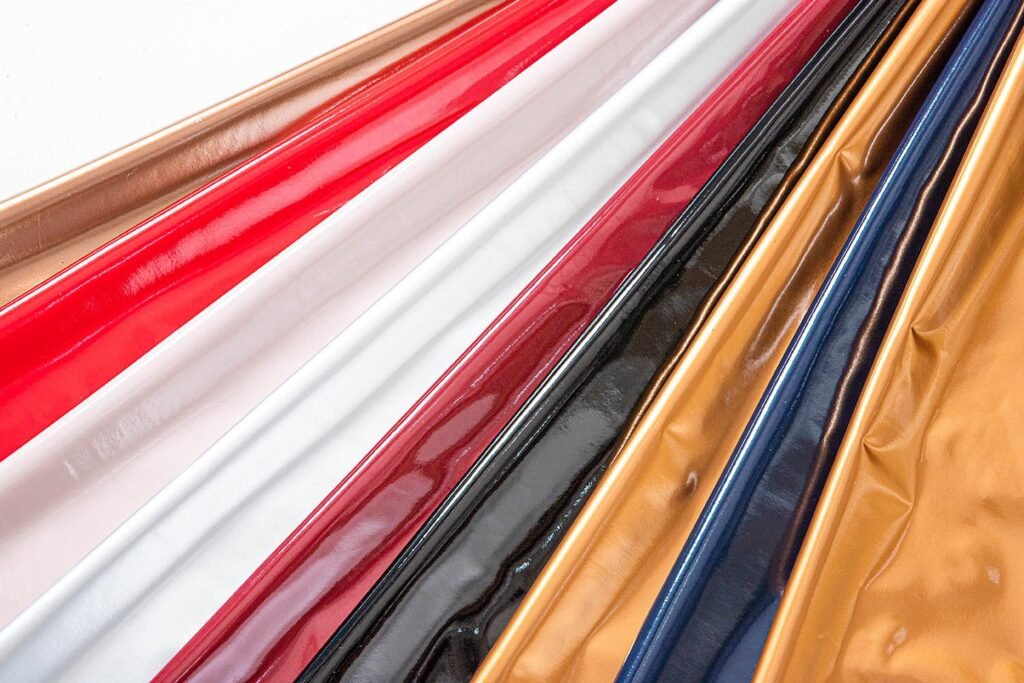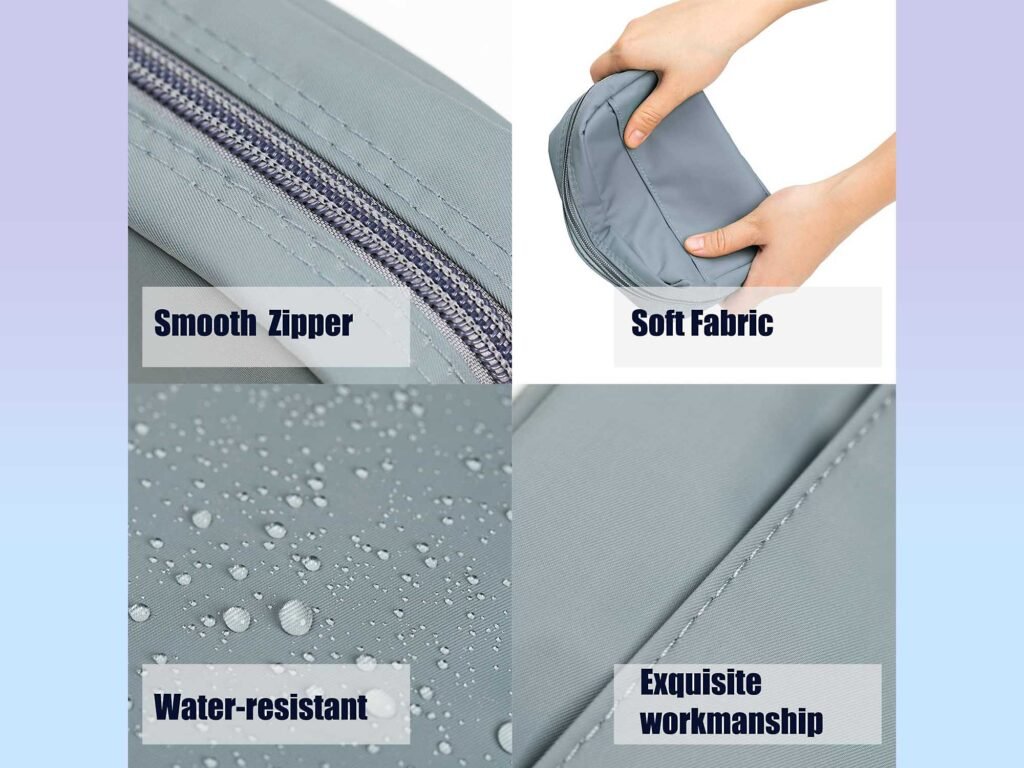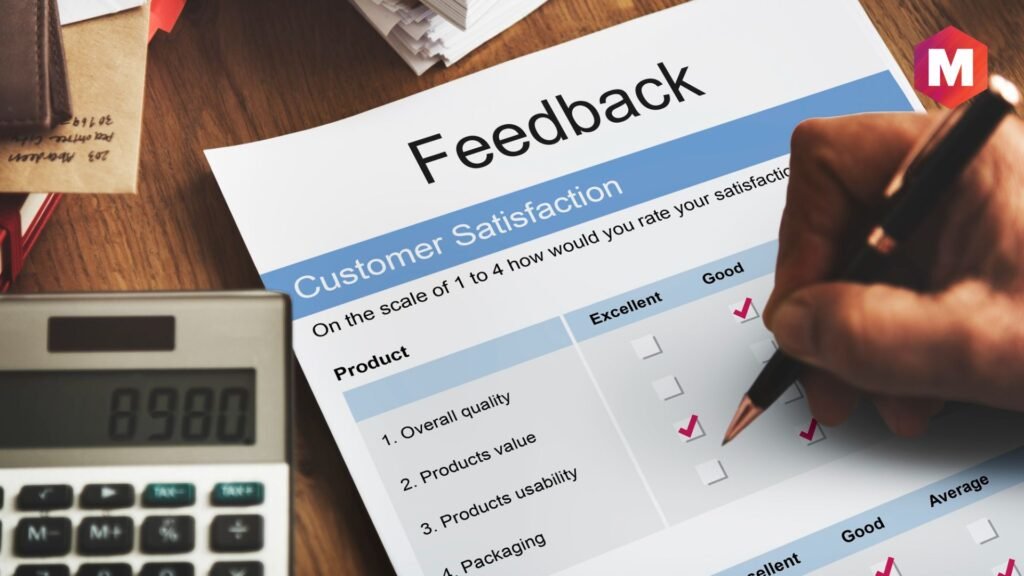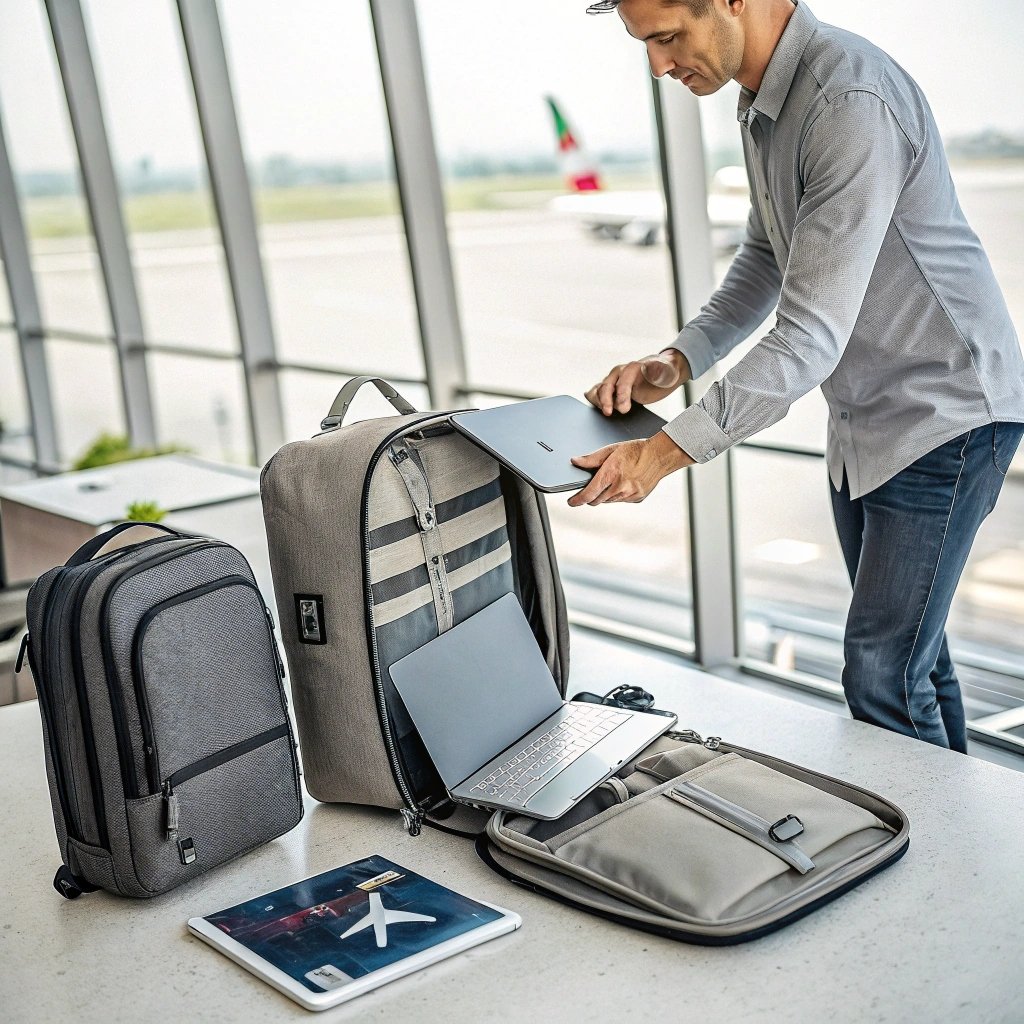Custom & Bulk Orders Available
Professional Cosmetic Bags Manufacturer & Wholesale Supplier
Innovative Design and Quality Production for Your Brand
Explore Our Comprehensive Range
Diverse Fabrics, Distinctive Styles – Tailored for You
Why choose us ?
Manufacturing capacity
Equipped with 10 advanced production lines and more than 100 skilled technicians. This allows us to provide high-efficiency, high-quality products to meet your diverse needs. Our commitment is to provide you and your customers with products you can rely on for years.ly on for years to come!
Tailored
We have a team of over 10 professional designers who can offer personalized OEM and ODM services based on your specific requirements. From design to material selection, our customized solutions can help you bring your ideas to life, improve your brand recognition, and make your products stand out in the market.
Eco-Friendly
From materials to processes, we are committed to promoting environmentally responsible practices and providing our customers sustainable options. We prioritize ecologically-friendly manufacturing processes while maintaining the highest quality standards to offer a product line that you and your customers can be proud of.
Reliable delivery
Our trade and industry-integrated business model offers a simple ordering process and reliable global logistics. This ensures that your order, regardless of size or destination, is delivered quickly and to your requirements and specificat
Our advantage
Flexible MOQs
Whether you’re a startup or an established brand, our flexible MOQs can be adapted to your business needs and support your growth at every stage!
Competitive price
By taking advantage of our integrated industrial and trade operations, we can offer competitive pricing and increase your profit margins without sacrificing quality. customized solutions can help you bring your ideas to life, improve your brand recognition, and make your products stand out in the market.
Global Market Insights
We specialize in crafting bags that align with the latest global trends, ensuring that your product offerings stay relevant and competitive. With our extensive sourcing and sales expertise, we provide strategic insights to keep your product line innovative and responsive to evolving market demands.
24/7 Customer Support
We offer a comprehensive 1-to-1 service, with our dedicated support team on hand to answer any questions you may have and ensure a smooth partnership from initial contact through to post-delivery.
Ready to TransformYour Product Line?
Contact us to discover our innovative solutions in custom cosmetic bags, tailored to your unique brand needs, and see how we can drive your business growth to new heights.
Certified Quality— Customer-Approved
Our commitment to quality is unwavering

Hear It From Our Customers
Your Confidence, Our Commitment
Our customers’ success stories are at the heart of what we do. Their confidence in our products fuels our commitment to continual excellence and innovation.
I ordered personalized cosmetic cases with adjustable compartments to accommodate a variety of makeup tools. The manufacturer provided a 3D mockup before production, allowing me to request adjustments for the perfect fit. The cases arrived with a high-quality finish, and the personalized embossing of my logo added a luxurious touch. Their attention to detail is unmatched.
For a significant beauty expo, we needed clear cosmetic bags that could pass security checks without hassle. The manufacturer recommended a high-quality PVC that was durable yet stylish. Our logo was printed precisely, and the bags featured a handy wrist strap for easy carrying. The proactive communication and timely delivery made the whole process seamless.
We requested cosmetic bags made from a unique blend of organic cotton and recycled polyester featuring our signature leaf design in water-based ink. The team was attentive to our sustainable vision, suggesting eco-friendly alternatives at every step. Our customers were thrilled to see the QR code label that leads to information on how the bags can be recycled or composted. This level of detail and care has genuinely set our brand apart.
Our custom cosmetic bags were crafted to hold our full skincare line, with compartments for each product's unique size and shape. The exterior featured a delicate, floral embossed pattern that echoed our brand's focus on natural beauty. Including a minor, detachable mirror inside the bag was a hit with our customers, who appreciated the blend of functionality and elegance. The team's dedication to bringing our vision to life was evident in every detail.
Chapter 01
All You Need To Know About Cosmetic Bag
Table of Contents
Chapter 02
What Are the Cosmetic bags?

Cosmetic bags are small, portable bags designed to store and organize makeup, skincare products, and other personal care items. They come in various shapes, sizes, and materials, catering to different needs and preferences. These bags can be as simple as a small pouch for daily essentials or as elaborate as a large, multi-compartment case for professional use.
Chapter 03
What Are the Different Types of Cosmetic Bags?
Cosmetic bags come in various types, each designed to meet specific needs and preferences. Here are some common types:
Hanging Cosmetic Bags
These bags come with a hook that allows them to be hung up, usually in a bathroom or closet. They have several compartments and pockets, making it easy to see and access all your products simultaneously. Hanging bags are handy for saving space and keeping your items organized while traveling.
Each type of cosmetic bag serves a different purpose, so choosing the right one depends on how you plan to use it and what you need to carry.
Chapter 04
Which Types Are Most Popular in Different Markets?
Different types of cosmetic bags vary across markets, depending on cultural preferences, lifestyle needs, and consumer trends. Here’s a breakdown of the most popular types of cosmetic bags in different regions:
North America (USA, Canada)
- Travel Cosmetic Bags:
With a strong culture of travel and mobility, travel cosmetic bags with multiple compartments and durable, water-resistant materials are trendy. Consumers prefer bags that can organize their products neatly while on the go.
- Vanity Cases:
Vanity cases, especially those with hard shells and professional-grade interiors, are also popular among makeup enthusiasts and professionals who value protection and style.
- Eco-Friendly Options:
In line with the growing trend towards sustainability, eco-friendly cosmetic bags made from organic cotton, recycled materials, or biodegradable fabrics are in demand.
Europe (UK, Germany, France)
- Leather cosmetic bags:
European consumers often prefer high-quality, stylish cosmetic bags made from leather. These bags are seen as a luxury item and are favored for their durability and elegant appearance.
- Compact Pouch Bags:
Compact pouches that fit easily into handbags are popular in Europe, where there’s a preference for minimalism and practicality. These are often chosen for daily use to carry essential items.
- Roll-Up Bags:
Roll-up cosmetic bags that offer easy storage and organization, particularly for brushes and smaller items, are gaining popularity in markets like the UK and France.
Asia (China, Japan, South Korea)
- Kawaii (Cute) Designs:
In Japan and South Korea, cosmetic bags with cute, whimsical designs, often featuring popular characters or pastel colors, are trendy. These bags are typically small, pouch-style, and frequently used as accessories.
- Multi-Functional Bags:
In markets like China, multi-functional bags that double as a handbag or clutch are highly favored. Consumers prefer versatile designs for multiple purposes, including makeup storage and daily use.
- Organized Compartment Bags:
Given the popularity of skincare and beauty routines in these regions, bags with multiple compartments for organizing different products (e.g., skincare, makeup, tools) are in demand.
Middle East
- Luxury and Branded Bags:
There is a strong preference for luxury, branded cosmetic bags in the Middle East. High-end materials like leather, with gold accents or embellishments, are trendy.
- Large Vanity Cases:
Large vanity cases that store an extensive collection of beauty products are in demand, reflecting the region’s affinity for premium and comprehensive beauty routines.
- Custom and Personalized Bags:
There is also a growing market for custom-made or personalized cosmetic bags, especially those that reflect individual styles and preferences.
Africa
- Affordable and Durable Bags:
In many parts of Africa, there is often a demand for affordable yet durable cosmetic bags that can withstand daily use. Simple pouch bags and travel cases from sturdy materials like nylon or canvas are popular.
- Multi-Use Bags:
Bags that can serve multiple purposes, such as doubling as a cosmetic bag and a small carryall, are also in demand, reflecting the practical needs of consumers.
Understanding each market’s preferences helps tailor product offerings to meet local demands, ensuring better market penetration and customer satisfaction.
Chapter 05
What Materials Are Commonly Used For Cosmetic Bags?
Cosmetic bags are made from a variety of materials, each offering different benefits in terms of durability, style, and functionality. Here are some commonly used materials:

Fabric (Cotton, Nylon, Polyester)
Fabric bags are lightweight and versatile, available in various colors and patterns. Cotton is often used for eco-friendly options, while nylon and polyester are popular for their durability and resistance to water and stains. Fabric bags are easy to clean and can be designed with various compartments for organization.

Leather
Leather cosmetic bags are known for their durability and luxurious feel. They are often chosen for their elegant appearance and longevity. Leather bags may be more expensive, but they offer excellent protection for your cosmetics. They can develop a beautiful patina over time. They are suitable for both casual and formal use.

PVC and Vinyl
These materials are commonly used for their waterproof and easy-to-clean properties. PVC and vinyl bags are often transparent or semi-transparent, making it easy to see the contents inside. They’re great for travel or bathroom use, where products might spill or get wet.

Canvas
Canvas is a durable and sturdy material, often used for cosmetic bags that need to withstand regular use. It’s easy to clean and can be treated to be water-resistant. Canvas bags are usually more casual and can be customized with prints or embroidery.
Silicone
Silicone bags are flexible, waterproof, and easy to clean, making them ideal for storing wet or liquid products. They are often used for small pouches with specific items like brushes or toiletries.
Each material has advantages, so the choice depends on your priorities, such as durability, style, ease of cleaning, and the specific use case for the cosmetic bag.
Chapter 06
What Customization Options Do You Offer For Cosmetic Bags?
We offer many options to meet your needs and preferences when customizing cosmetic bags. Here are some of the key customization options available:
Material Selection
You can choose from various materials, including cotton, nylon, polyester, leather, PVC, and canvas, depending on your desired look, feel, and functionality.
Size and Shape
We offer customization in the size and shape of the cosmetic bags to suit different purposes, whether you need a compact pouch for daily essentials or a larger travel case with multiple compartments.
Color and Print
We can customize the color of the bags to match your brand or personal preference. Additionally, you can opt for custom prints, patterns, or designs, including logos, monograms, or specific artwork, to make the bags unique.

Zippers and Closures
We offer various zippers and closures, including standard zippers, magnetic snaps, or drawstring closures, to match your desired style and ease of use.

Branding
For businesses, we provide branding options like embossed logos, screen printing, or embroidered labels. This is ideal for promotional giveaways or retail products.
We aim to create cosmetic bags that perfectly align with your brand by offering these customization options.
Chapter 07
What is the Cosmetic Bag Production Process?
The production process of a cosmetic bag involves several vital steps to ensure quality and precision in the final product. Here’s an overview of the process:

- Design and Planning:
The first step is to create a design based on the client’s specifications, including the size, shape, material, and custom features. During this phase, a prototype or sample is often produced to finalize the design and make necessary adjustments.

- Material Selection and Cutting:
The appropriate materials are selected once the design is approved. The fabric or material is then cut according to the design patterns. Cutting is done precisely to ensure that all pieces fit together during assembly.

- Printing and Branding:
If the cosmetic bag requires custom printing, such as logos, patterns, or other designs, this is done at this stage. Depending on the material and design requirements, techniques like screen printing, heat transfer, or embroidery are used.

- Sewing and Assembly:
The cut pieces are then sewn together, starting with the main body of the bag. Zippers, pockets, linings, and other components are also attached during this stage. Skilled workers use industrial sewing machines to ensure solid and durable seams.

- Quality Inspection:
After assembly, each bag undergoes a thorough quality inspection. This includes checking for consistency in stitching, the proper functioning of zippers and closures, and overall finish. Any defective items are set aside for repair or are discarded.

- Packaging:
Once the bags pass the quality inspection, they are cleaned, folded, and packed according to the client’s specifications. Depending on the order requirements, they may be packed individually in protective packaging or in bulk.

- Shipping:
Finally, the packaged bags are prepared for shipment. Logistics are arranged based on the destination, and the bags are shipped to the client.
Each step of the production process is carefully managed to ensure that the final product meets the desired quality standards and specifications, resulting in a cosmetic bag that is both functional and stylish.
Chapter 08
What Are the Quality Standards We Should Look for in Cosmetic bags, and How Do We Ensure Our Suppliers Meet These Standards?
When selecting cosmetic bags, it’s crucial to ensure they meet specific quality standards to guarantee durability, functionality, and customer satisfaction. Here are the critical quality standards to look for, along with steps to ensure your suppliers meet these standards:
Quality Standards for Cosmetic Bags
Material Quality
The material should be durable, resistant to wear and tear, and appropriate for the intended use. For example, waterproof materials are essential for bags that may come into contact with liquids. The material should also maintain its appearance over time, resisting fading, fraying, or damage.
Stitching and Seams
High-quality stitching is critical for the bag’s longevity. Look for tight, even stitches that hold the seams together securely without loose threads. Reinforced stitching at stress points, such as corners and zipper ends, is also important to prevent tearing.
Zippers and Closures
The zippers should glide smoothly without catching and be robust enough to withstand frequent use. The teeth should align perfectly, and the pull tabs should be firmly attached. Other closures, like snaps or magnets, should also function reliably.
Internal Compartments and Lining
The lining should be well-fitted and made of durable material that resists tears and stains. If the bag has compartments or pockets, they should be securely sewn and appropriately sized for their intended use.
Printing and Branding
Any logos, patterns, or branding elements should be crisp, clear, and durable. Printing should resist fading or peeling over time, maintaining its appearance even with regular use.
Ensuring Suppliers Meet These Standards

Supplier Vetting
Begin by thoroughly vetting potential suppliers. This includes checking their reputation and experience in producing similar products and reviewing any certifications they hold (such as ISO standards). Ask for references or case studies from previous clients to gauge their reliability.

Sample Testing
Always request samples before placing a large order. Test these samples against your quality standards, including durability, stitching, and material quality. Simulating regular use is also helpful to see how the bags hold up over time.

Quality Control Inspections
Implement a rigorous quality control process. This can include on-site inspections at the supplier’s facility during production, where you or a third-party inspector can check the quality at various stages. Final pre-shipment inspections are crucial to ensure the entire batch meets your standards.

Precise Specifications and Contracts
Provide the supplier with detailed specifications that outline your quality expectations, including materials, construction, and finishing details. Ensure these specifications are part of the contract and that there are penalties for failing to meet the agreed-upon standards.

Continuous Communication and Feedback
Maintain open lines of communication with your suppliers. Regularly provide feedback on samples and batches and address issues collaboratively. Building a solid relationship with your supplier can lead to better quality control and faster resolution of any problems.
By adhering to these quality standards and ensuring that your suppliers meet them, you can confidently offer cosmetic bags that are durable, functional, and meet the expectations of your customers.
Chapter 09
What Are the Key Considerations for Packaging and Branding of Cosmetic Bags?

Packaging Design
- Attractive and Functional Packaging
The packaging of your cosmetic bags should be visually appealing and functional. Consider using sleek, modern designs that reflect the style and quality of the product inside. Packaging should protect the product during transit and provide a memorable unboxing experience for the customer.
- Sustainability
As consumers increasingly prioritize eco-friendliness, sustainable packaging materials can make your products stand out. Consider using recyclable or biodegradable packaging options that align with the growing demand for environmentally responsible products.

Branding Elements
- Consistent Brand Identity
Your logo, colors, and fonts should be consistently applied across all packaging and branding materials. This consistency helps build brand recognition and trust. Whether a simple pouch or a luxury vanity case, the branding should reflect the product’s positioning in the market.
- Customization Options
Offering branded customization options, such as embossed logos, screen-printed designs, or even personalized monograms, can add a unique touch to the product. Customized packaging that includes the buyer’s name or a special message can enhance the product’s perceived value.
Differentiation Through Design
- Unique Visual Appeal
To stand out in a crowded market, focus on packaging that captures attention. This might include bold colors, innovative shapes, or special finishes like matte, gloss, or metallic. Even minor details like custom zipper pulls or branded lining can contribute to a distinctive look.
- Storytelling Through Packaging
Use packaging as a storytelling tool. This could include a brief description of the product’s design inspiration, craftsmanship, or the sustainable practices used in production. Packaging inserts, like cards or booklets, can also tell the brand’s story or provide care instructions, enhancing the overall experience.

Strategic Branding Placement
- Visible Logo Placement
Ensure your brand’s logo or name is prominently displayed on the product and the packaging. This could be through tags, printed labels, or directly on the cosmetic bag itself. The placement should be tasteful yet noticeable to reinforce the brand each time the product is used.
- Incorporating Brand Values
If your brand emphasizes specific values, such as sustainability or craftsmanship, communicate these through the packaging and branding. This might involve using eco-friendly materials, highlighting artisan techniques, or including certifications.
By carefully considering these aspects of packaging and branding, you can create cosmetic bags that meet functional needs and resonate with consumers on a deeper level, helping your products stand out in the marketplace.
Chapter 10
How Do We Determine The Right Pricing Strategy For Different Types of Cosmetic Bags?
Choosing the right pricing strategy for different cosmetic bags involves balancing various factors, including production costs, market demand, target audience, and competitive landscape. Here’s how to approach it:

Understand Your Costs
- Production Costs: Calculate the total cost of each type of cosmetic bag, including materials, labor, manufacturing, and any customizations. Don’t forget to include overhead costs like packaging, shipping, and marketing.
- Variable Costs: Consider fluctuating costs, such as material prices or labor rates. Ensure your pricing can absorb these variations without significantly impacting your profit margins.
- Fixed Costs: Include fixed costs like rent, salaries, and utilities in your overall pricing strategy, ensuring that these are covered by your product pricing.
Identify Your Target Market
- Market Segmentation: Determine who your customers are and what they value most. For instance, budget-conscious consumers may prioritize price, while luxury buyers focus on quality and brand prestige.
- Willingness to Pay: Assess the price range your target audience is willing to pay for different types of cosmetic bags. Surveys, market research, and competitor analysis can provide insights into customer expectations.
Analyze Competitors
- Competitor Pricing: Research how your competitors price similar products. This helps you position your products competitively. You might justify a higher price point if your bags offer superior quality or unique features.
- Value Proposition: Consider what differentiates your product from competitors. If you offer something unique—such as eco-friendly materials, advanced functionality, or premium branding—you may be able to charge a premium price.
Choose a Pricing Strategy
- Cost-Plus Pricing: Add a standard markup to the cost of producing each bag. This method ensures you cover all expenses and achieve a consistent profit margin. It’s straightforward but may not fully capture the value perceived by customers.
- Value-Based Pricing: Set prices based on the perceived value to the customer. This approach is practical for luxury or highly customized bags where customers may be willing to pay more for added value, such as superior materials, craftsmanship, or brand prestige.
- Competitive Pricing: Price your bags in line with or slightly above/below competitors, depending on your market positioning. This is useful in highly competitive markets where customers compare prices closely.
- Penetration Pricing: Introduce new products at a lower price to quickly gain market share, then gradually increase prices as your brand becomes established. This strategy can help attract budget-conscious buyers or introduce your brand to new markets.
- Premium Pricing: Set higher prices for high-end or luxury products to create an exclusive image. This strategy works well if your bags are made from premium materials, have superior design, or offer unique features.
Consider Psychological Pricing
- Price Points: Use price points that appeal to customers psychologically, such as pricing just below a round number (e.g., $49.99 instead of $50). This can make the product appear more affordable.
- Bundling: Offer bundles where customers get a set of bags at a slightly reduced rate than if purchased individually. This encourages higher spending and increases perceived value.
Monitor and Adjust
- Sales Performance: Regularly review the sales performance of different cosmetic bags. If a particular type isn’t selling as expected, consider adjusting the price or re-evaluating the target market.
- Market Changes: Stay attuned to market trends, economic shifts, and competitor actions that might affect your pricing strategy. Be prepared to adapt quickly to maintain competitiveness.
Offer Tiered Pricing
- Product Tiers: Develop a range of products at different price points to cater to various segments of your market. For example, you could offer an entry-level, mid-tier, and premium line, each with distinct features and pricing.
- Customization Levels: Provide options for customization at different price levels, allowing customers to choose between basic models and fully customized, higher-priced bags.
By considering these factors and adopting a flexible approach, you can establish a pricing strategy that aligns with your business goals, meets customer expectations, and maximizes profitability across different cosmetic bags.
Tell Us What You Need — We’ll Take Care of the Rest!
Let us know your specific requirements, and our team will get back to you with a tailored solution. We look forward to working with you!









Our order of 500 cosmetic bags with custom sakura designs for our store's spring collection was handled wonderfully. The team suggested a durable, yet soft material that made the bags feel premium. The printing was vibrant, capturing the delicate details of sakura petals perfectly. Delivery was two weeks early, and the feedback from our customers has been incredibly positive.